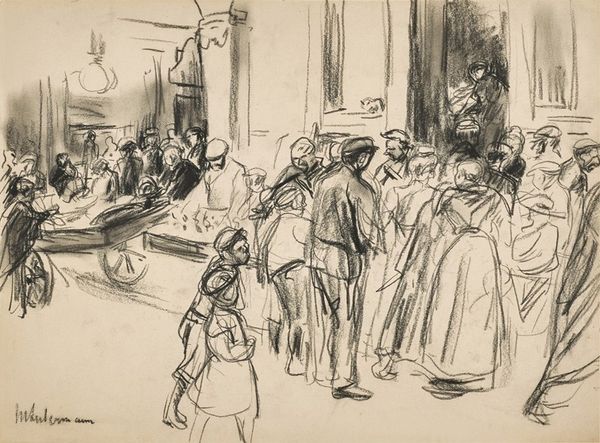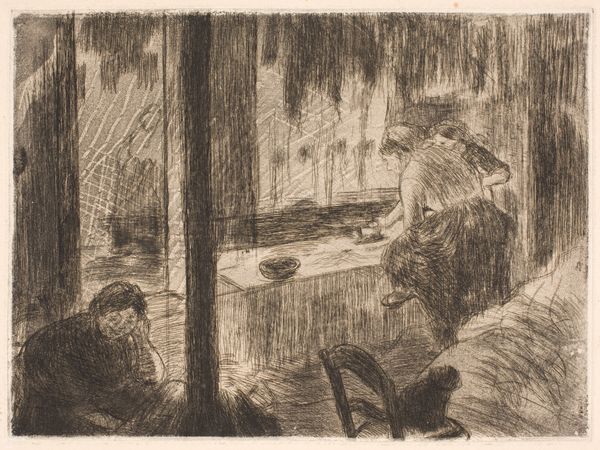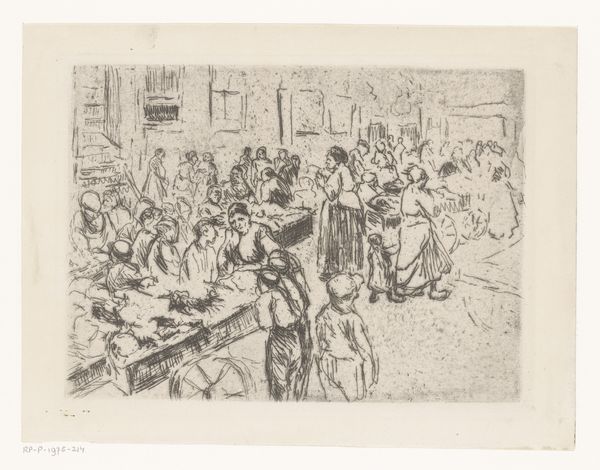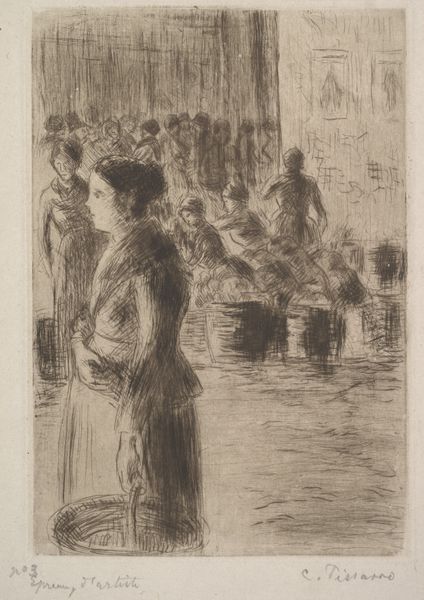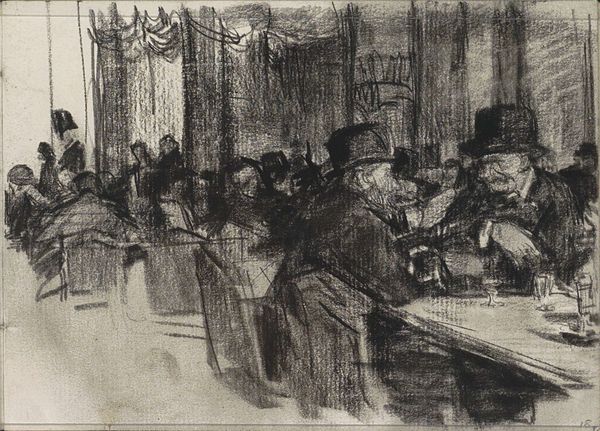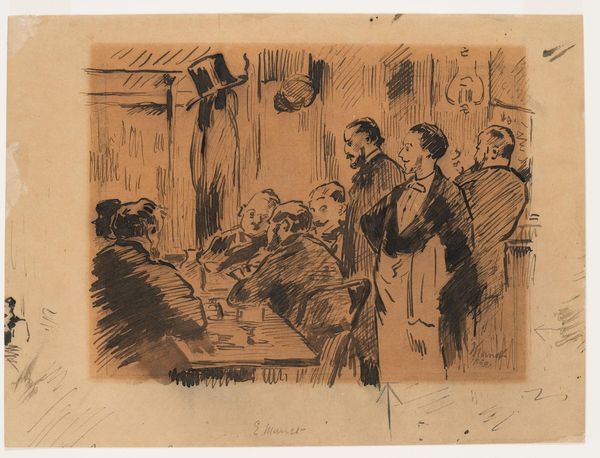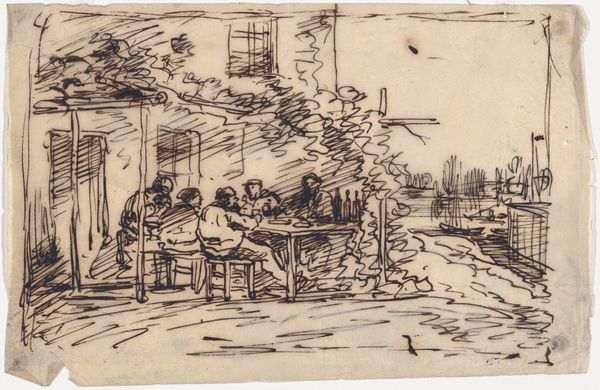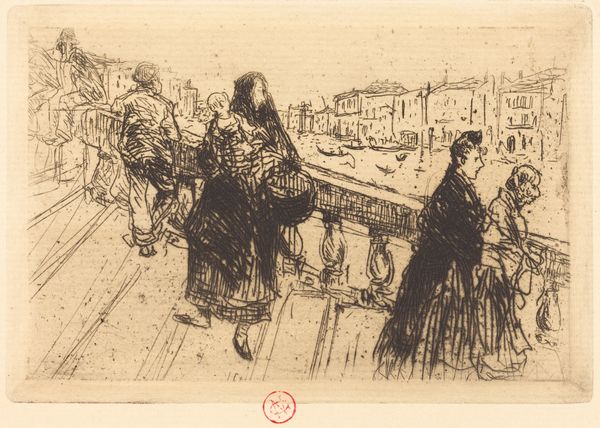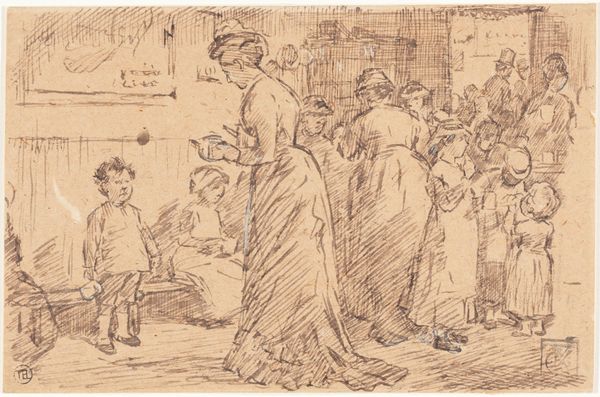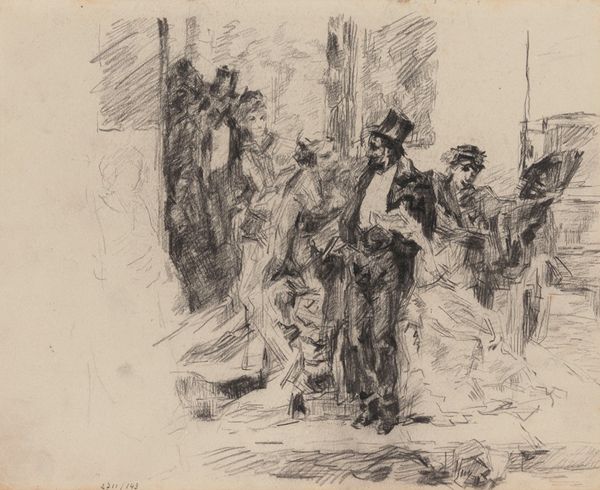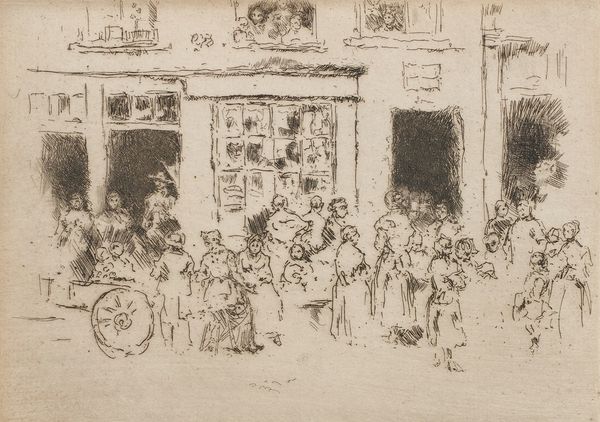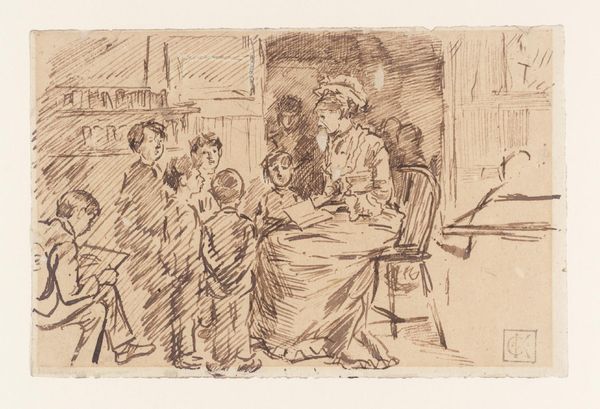
From the Jewish Quarter in Amsterdam: Fishmarket on the Street Corner 1908
0:00
0:00
Dimensions: plate: 24.8 × 30.6 cm (9 3/4 × 12 1/16 in.) sheet: 39.4 × 60 cm (15 1/2 × 23 5/8 in.)
Copyright: National Gallery of Art: CC0 1.0
Editor: Here we have Max Liebermann's "From the Jewish Quarter in Amsterdam: Fishmarket on the Street Corner," created in 1908 using etching techniques. It's quite a busy composition! What strikes me is how this snapshot captures a bustling everyday scene. What's your take on it? Curator: It’s fascinating how Liebermann, associated with German Impressionism, chooses this slice of Amsterdam's Jewish quarter. Think about the socio-political context; genre paintings like these offered a glimpse into communities often marginalized or misrepresented. How does Liebermann’s artistic gaze, a potentially privileged one, shape our understanding of this 'everyday'? Editor: That's a great point; considering the power dynamics is key. Is there something particularly striking in the composition that hints at this? Curator: Note how the density of the figures and the close quarters emphasized by the etching technique create a sense of collective experience, possibly highlighting the tight-knit nature of the community within the cityscape. Consider how the museum’s acquisition of this piece influences its ongoing cultural value. Is it reinforcing or challenging existing narratives? Editor: It makes you wonder about the ethical implications of exhibiting images depicting specific cultural groups, and whether our interpretations truly respect their lived experiences. Curator: Precisely. How do we, as viewers and as an institution, engage with the historical weight and potential social implications inherent in such works? The role of this work transcends being "just" a cityscape. Editor: That's given me a lot to consider, especially how museums participate in framing these narratives. It adds so much more depth to seeing it now! Curator: I think it makes us appreciate the multilayered complexities in supposedly simple representations. It pushes us to really engage with art, doesn't it?
Comments
No comments
Be the first to comment and join the conversation on the ultimate creative platform.
